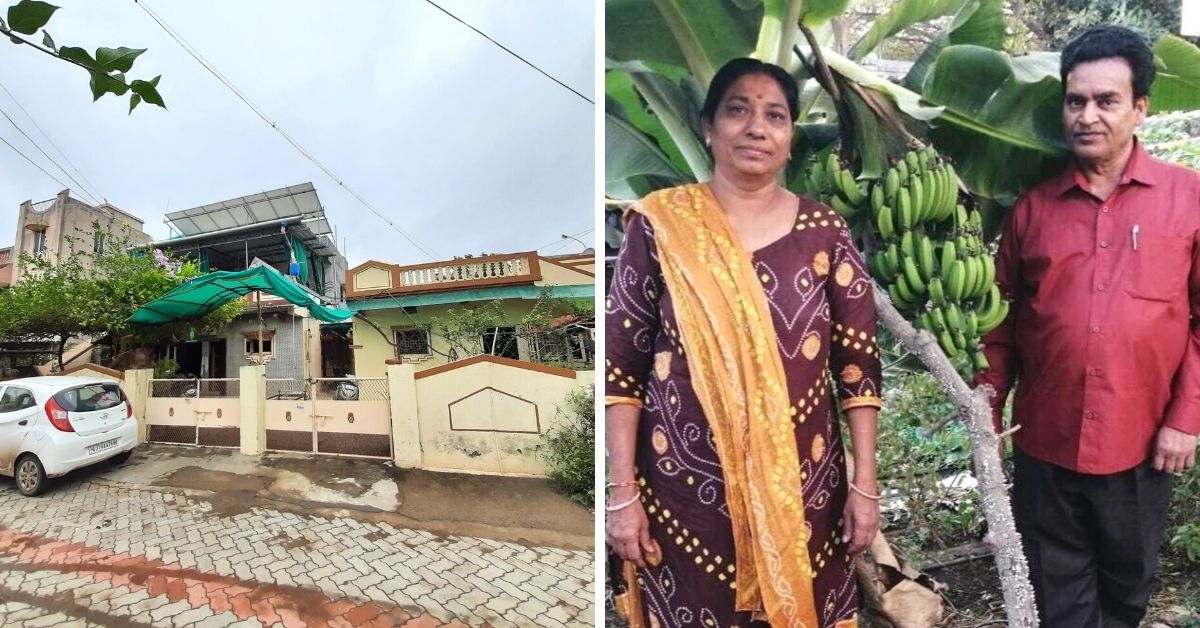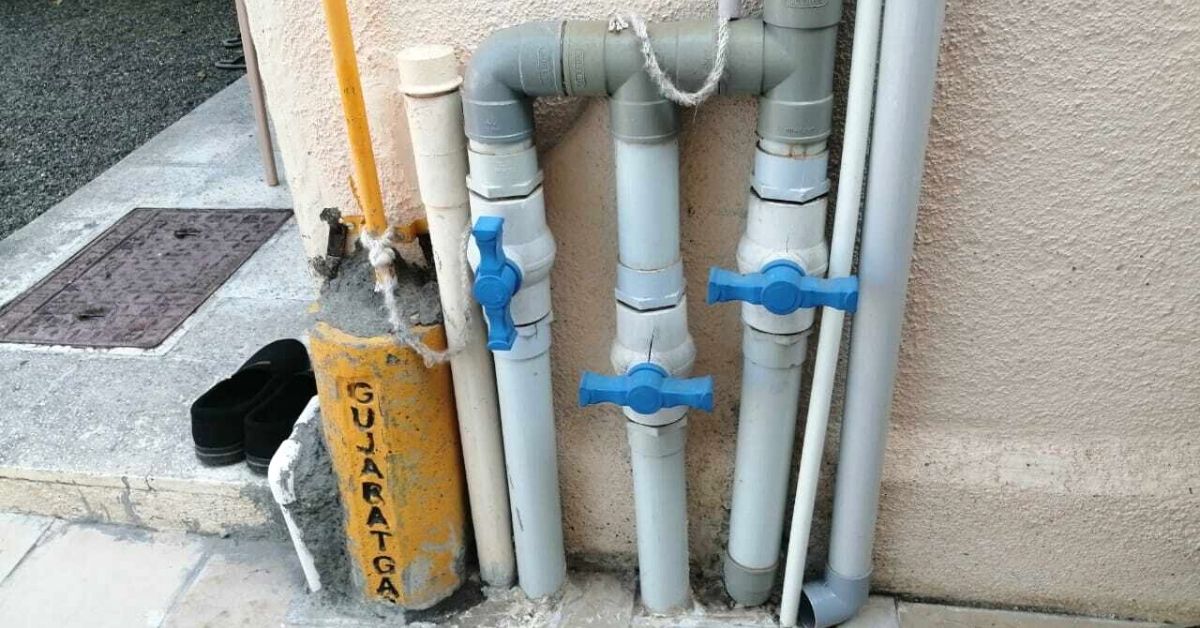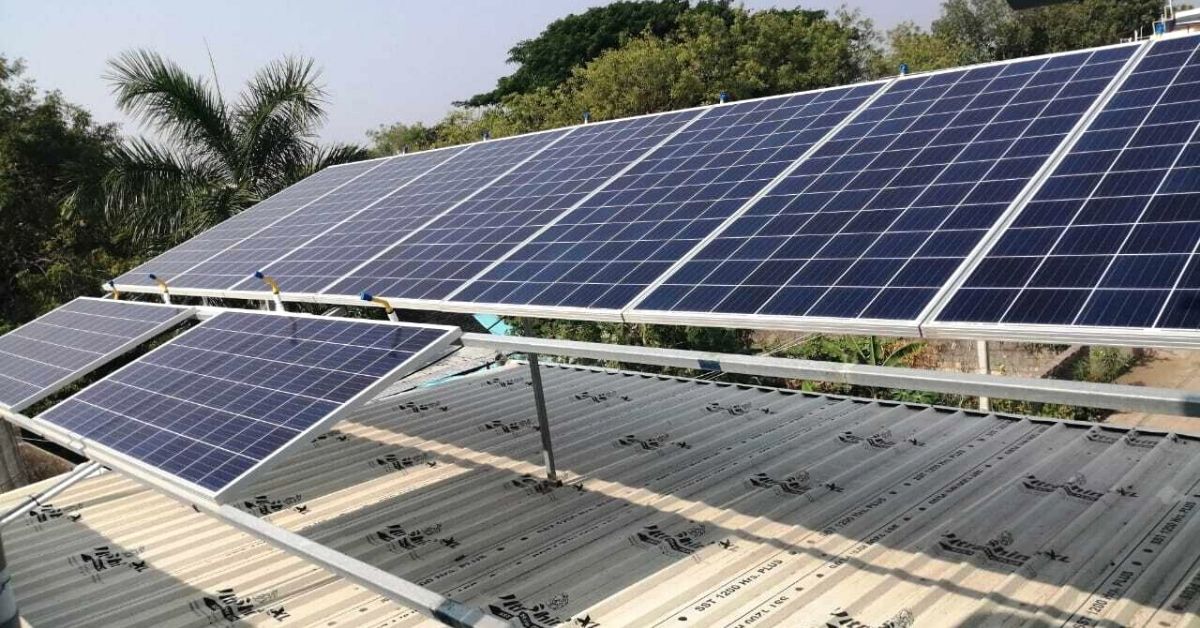Eco-Friendly Home Generates Zero Bills for Water & Power, Earns Rs 10K Too!
Gujarat-based Kanabhia Karkare and his wife Kailash built a low-cost sustainable house that is self-sufficient in water, electricity, food and more

Standing outside Kanubhai Karkare’s house in Amreli, Gujarat, will probably seem like another concrete building fitted in the neighbourhood. However, a walk around it will reveal its unique, sustainable features loaded inside his house.
An officer at the education department of the state government, Kanubhai, designed and built the house in 2000 for Rs 2.8 lakh. However, rather than blindly relying on an architect for the task, he designed the house ensuring that it serves as an example of how a sustainable home can be built in an urban set-up.
Kanubhai’s house can meet the water requirements without sourcing it from elsewhere for three years.

Additionally, the family grows organic vegetables to meet nutrient requirements and treat their sewage water within the premises. Moreover, it receives Rs 10,000 from the government by supplying electricity to the grid.
Kanubhai explains his inspiration to introduce sustainable features stemmed from the issue of water scarcity reeling in the Saurashtra region of the state.
“The region faces the brunt of water scarcity every summer, and our neighbourhood receives water 15 days a month. It causes immense inconvenience, and hence I decided to take sustainable measures to resolve the crisis,” he tells The Better India.
Kanubhai positioned the house allowing it to receive maximum sunlight. He made the windows larger than the conventional size and ensured that the house had air circulation with a horizontal cross-ventilation technique. “This ensures the air gets cooled before entering the house,” he says.
“The structural design helped reduce the need to use electrical lighting and fans during the day,” he says.
To address the water scarcity issues, Kanubhai built a 20,000-litre capacity underground water tank that stores rainwater during the monsoon. Another water tank of 8,000 litre capacity in the backyard serves the needs of gardening and other non-domestic needs.
“If both the tanks overflow due to excess rains, the rainwater is harvested and directed to recharge the groundwater table. Thus, the rainwater received in our house premises is channelised for domestic purpose or returned to nature,” he says, adding that he innovated the concept to arrest rainwater.

To recycle the sewage water from the house, Kanubhai has created 2-feet-long vegetation beds with specific plant species that break down the complex elements present in the waste and decompose them. “The recycled water is then used for kitchen gardening or other usages. We grow all our vegetables in the backyard as the ones available in the market are chemically grown, unhealthy, poisonous for human consumption and the environment,” he says.
His wife Kailash says that organic food grown in their kitchen garden meets 95 per cent of their daily vegetable needs. “We have even installed a drip irrigation system to make efficient use of water for their growth,” she adds.
Kailash says the family has also set up a 3 kW solar power unit that meets all their electricity needs in the house. “The electricity generated by solar panels is more than required. The surplus is sent to the power utility company, which pays us Rs 10,000 for sourcing the energy,” she adds.
The house also earned an ‘Ideal House Award’ by the District and the State Government.
On a concluding note, Kanubhai says, “One can build a house spending crores, however, it is crucial to include sustainability aspects that are also affordable for an individual across all strata of society.”
Read this article in Hindi here.
Edited by Yoshita Rao
If you found our stories insightful, informative, or even just enjoyable, we invite you to consider making a voluntary payment to support the work we do at The Better India. Your contribution helps us continue producing quality content that educates, inspires, and drives positive change.
Choose one of the payment options below for your contribution-
By paying for the stories you value, you directly contribute to sustaining our efforts focused on making a difference in the world. Together, let’s ensure that impactful stories continue to be told and shared, enriching lives and communities alike.
Thank you for your support. Here are some frequently asked questions you might find helpful to know why you are contributing?


This story made me
-
97
-
121
-
89
-
167











